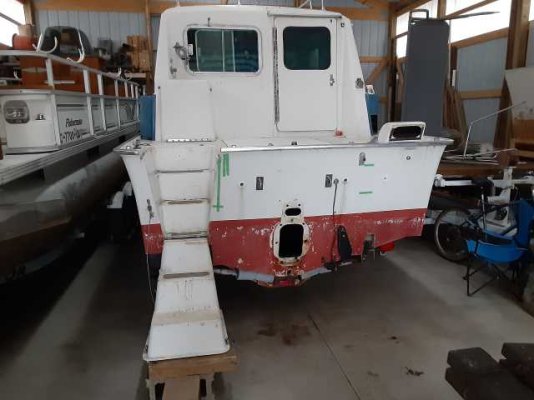Bob M
Veteran Member
We sold our 37' trawler and want to cruise in a much smaller boat, a 1973 SeaCamper, a project boat. I've removed the rotted transom and stringer wood and am nearly finished removing the bilge Styrofoam, the cause of the rotted wood. The Styrofoam retained water, which rotted the adjoining wood.
Except for minimal cabin sole support, the Styrofoam provided no structural benefit. The only benefit I can see is water displacement, should the boat sink.
There are probably better foams to use these days than Styrofoam. I've seen 2 liter capped bottles recommended instead of foam. Another recommendation was to carry a life raft and forget about adding displacement to the bilge.
I'm hoping to add center-bilge tanks to the boat (fuel, water and sewage), which would take up considerable space formerly displaced by Styrofoam. These tanks aren't likely to be empty, so the displacement value of the tanks would be minimal.
Water displacement foam, bottles, or nothing?
Except for minimal cabin sole support, the Styrofoam provided no structural benefit. The only benefit I can see is water displacement, should the boat sink.
There are probably better foams to use these days than Styrofoam. I've seen 2 liter capped bottles recommended instead of foam. Another recommendation was to carry a life raft and forget about adding displacement to the bilge.
I'm hoping to add center-bilge tanks to the boat (fuel, water and sewage), which would take up considerable space formerly displaced by Styrofoam. These tanks aren't likely to be empty, so the displacement value of the tanks would be minimal.
Water displacement foam, bottles, or nothing?

